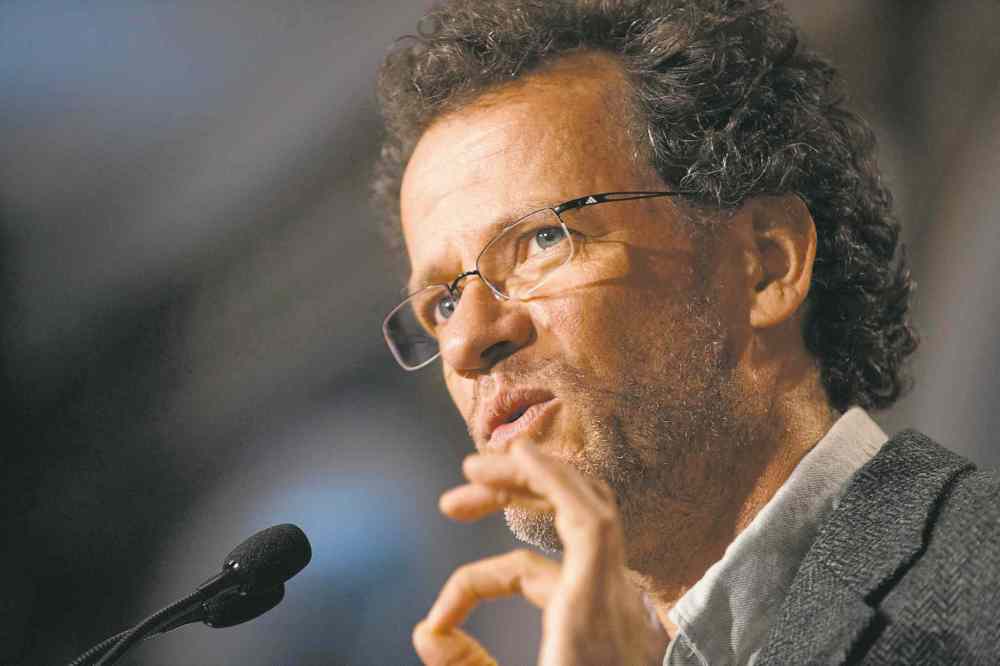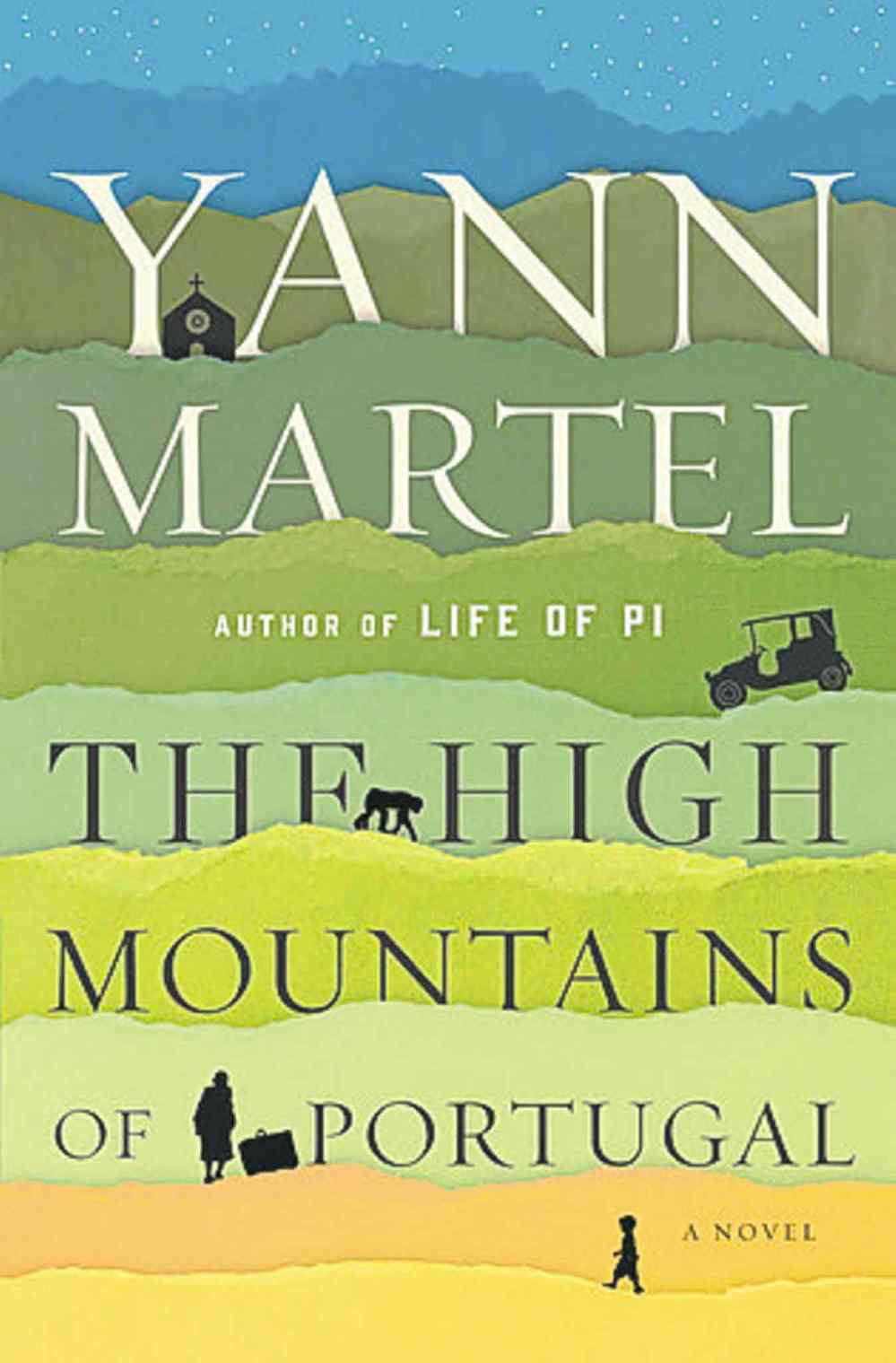Martel’s latest mines the metaphysical with a realist’s precision
Advertisement
Read this article for free:
or
Already have an account? Log in here »
To continue reading, please subscribe:
Monthly Digital Subscription
$1 per week for 24 weeks*
- Enjoy unlimited reading on winnipegfreepress.com
- Read the E-Edition, our digital replica newspaper
- Access News Break, our award-winning app
- Play interactive puzzles
*Billed as $4.00 plus GST every four weeks. After 24 weeks, price increases to the regular rate of $19.00 plus GST every four weeks. Offer available to new and qualified returning subscribers only. Cancel any time.
Monthly Digital Subscription
$4.75/week*
- Enjoy unlimited reading on winnipegfreepress.com
- Read the E-Edition, our digital replica newspaper
- Access News Break, our award-winning app
- Play interactive puzzles
*Billed as $19 plus GST every four weeks. Cancel any time.
To continue reading, please subscribe:
Add Winnipeg Free Press access to your Brandon Sun subscription for only
$1 for the first 4 weeks*
*$1 will be added to your next bill. After your 4 weeks access is complete your rate will increase by $0.00 a X percent off the regular rate.
Read unlimited articles for free today:
or
Already have an account? Log in here »
Hey there, time traveller!
This article was published 06/02/2016 (3521 days ago), so information in it may no longer be current.
Is there another contemporary novelist whose work so strangely blends concrete description with metaphysical themes?
Saskatoon-based Yann Martel, author of the 2001 Booker Prize-winning Life of Pi, has returned with another religious allegory, this one dominated by people rather than animals.
The High Mountains of Portugal is not as nearly as awe-inspiring as Life of Pi — how many novels are? — but it is more satisfying than Martel’s previous outing, the self-conscious 2010 Holocaust parable Beatrice and Virgil.

The new novel takes place largely, and not surprisingly, in the high mountains of northern Portugal, a bucolic and lightly populated region remote from European modernity.
Martel tells three successive stories, each with different characters set in different decades of the 20th century. He narrates each story in the present tense and in the third-person singular.
Death, loneliness and grief feature in all three, and Martel links them with an overarching plot line that gradually becomes clear.
In the first, set in 1904, a Lisbon archivist, Tomás, takes a journey by automobile to find a strange 17th-century crucifix that he believes will “turn Christianity upside down.”
The second story is the most obtuse. It takes place in 1938. A pathologist in the village where Tomás ended his quest has an intense conversation with his wife about the Christian roots of Agatha Christie murder mysteries. Then he performs an autopsy on a corpse, with bizarre results.
The third story begins in Ottawa in the 1980s. A 62-year-old senator, at loose ends following the death of his wife, seeks a new beginning. Peter Tovy relocates to the same Portuguese village with an unusual companion, a chimpanzee whom he buys from an Oklahoma primate sanctuary.
Each of the three stories contains elements out of place in a naturalistic novel. But Martel describes them with logical orderliness and a realist’s precision.
Tom°s, for example, has adopted a habit of walking backwards. This is his way of “objecting” to the deaths of his wife, son and father within the same week.
But Martel’s description of the act calls to mind a kinesiologist’s: “The forefeet touch down with nimble delicacy, and the calf muscles can calibrate their tensing and releasing with precision: Movement downward is therefore elastic and without strain.”
A similar deliberateness characterizes the long autopsy scene in the section story (“With the scalpel he cuts into the right leg next to the tibia, midway up; into the left knee between the patella and the medial condyle of the femur…”).
It also marks Martel’s purpose in the third story, in which he makes plausible the idea of an urban Canadian successfully setting up house in a foreign country with a monkey.
Of course, Martel’s methodical approach to the mystical was in evidence in his earlier novels. Think of the taxidermy set piece in Beatrice and Virgil and the description of the protaganist’s survival techniques in Life of Pi.
Even his first novel in 1996, Self, about a man who transforms into a woman and back again, betrays Martel’s preoccupation with conveying implausible action in technical detail.
Particularly striking this time is the way Martel recounts Tomás’s reaction to driving an early passenger car. Not only does he makes vivid the perception of speed and lack of control one would have felt in the first days of motorized travel, he describes the workings of the vehicle with an inventor’s gusto.

Yet all Martel’s linguistic precision is at the service of themes that are metaphysical and metaphoric. High Mountains is about men feeling forsaken by God, as they invoke the 22nd Psalm and search for meaning beyond material existence.
All three stories contain elements of the fantastic, recalling Latin American magical realism and the spiritual quest journeys of the Brazilian fantasist Paulo Coelho. Martel’s obsession with the nature of religious faith, meanwhile, makes him a kind of Catholic version of the American novelist Marilynne Robinson.
Perhaps the character he most closely identifies with is the pathologist, “a physician… rooted in the body, but also a believer, rooted in the promise of the Lord.”
But Martel cannily leaves his text open to agnostic interpretation. Peter the senator, for example, “has no use for organized religion,” and Tomás the archivist in his grief summons the sentiments of pioneering evolutionary psychologist Robert Ardrey that man “is born of risen apes, not fallen angels,” a phrase that reappears in the third section.
Images, phrases and symbols repeat throughout the novel. A character in each section uses the sentence “This is home.” Indeed the three stories are titled Homeless, Homeward and Home.
Tomás’s blackly comic automobile journey is retraced by Peter 80 years later, and Martel makes symbolic use of animals, especially the chimpanzee, throughout. Even Agatha Christie makes a return engagement.
The High Mountains of Portugal does not scale as high an artistic peak as Life of Pi. It is also hard to see it doing well commercially, given both its structure and its concerns.
But Martel, it is now clear, has a singular voice and his own obsessions. His fans will want to stick around for the ride.
Morley Walker is a retired Free Press journalist.


